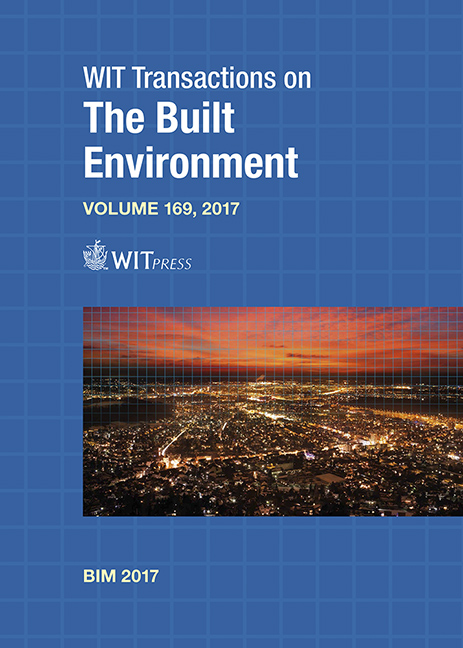ASSESSING THE FEASIBILITY OF USING BUILDING INFORMATION MODELLING (BIM) TO IMPROVE COLLABORATION ON PUBLIC SECTOR PROJECTS IN THE ZAMBIAN CONSTRUCTION INDUSTRY
Price
Free (open access)
Transaction
Volume
169
Pages
9
Page Range
191 - 199
Published
2017
Size
274 kb
Paper DOI
10.2495/BIM170181
Copyright
WIT Press
Author(s)
DANSTAN BWALYA CHIPONDE, LAWRENCE PUNDA MUTALE, JOSEPHINE M. ZIKO, NDONDO JALO
Abstract
This study was conducted in order to improve collaboration on public sector projects in the Zambian Construction Industry (ZCI) through the application of Building Information Modelling (BIM). In order to meet the research objectives, a questionnaire survey was used in collecting data and an exploratory research approach was adopted. Both quantitative and qualitative methods for data collection and analysis were also used. Worth noting as a limitation of this research is that only 64 questionnaires from the 111 that were distributed were received and this may not be representative of the ZCI. Further, only 2 provinces out the 10 in the country were considered for data collection. The findings revealed that the common collaboration challenges faced on public projects include delays in information exchange, poor project relationship and information management. This was mainly due to the huge reliance on 2D documents as a means of information exchange and the traditional procurement method. Hence, in order to eliminate collaboration challenges, the use of BIM is inevitable in the ZCI because it promotes efficient communication and coordination among project parties. This is important because construction projects involve the exchange of information among the many stakeholders involved. Therefore, if construction professionals are to attain their goals, this will require that new collaborative means are adopted, essentially adopting BIM in the ZCI and world over.
Keywords
collaboration, Building Information Modelling, public projects, Zambian construction industry





